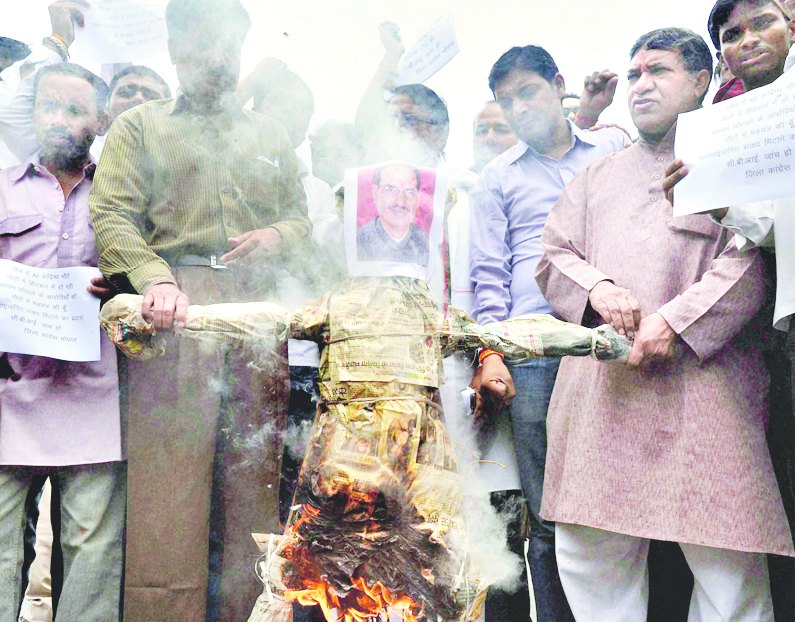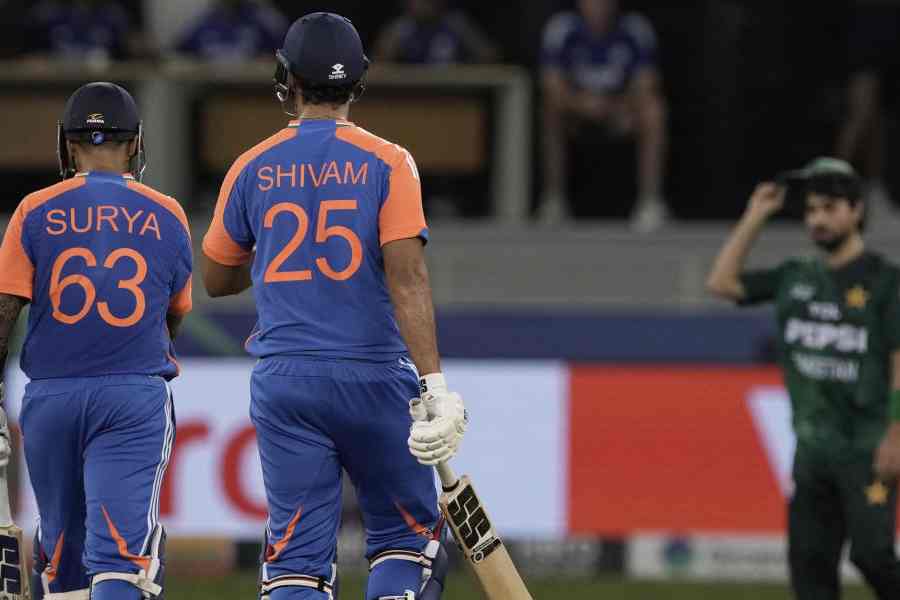 |
What does it mean to adapt a play by Shakespeare? It could mean that a film-maker has an epiphany reading the play; he is struck by how appropriate the structure of the play is for telling some contemporary story, so he sets it in that context and re-purposes it for the present day. There are many Indian political settings where Julius Caesar would tick every box: conspiracy, treachery, assassination, inspired rabble-rousing rhetoric, even fickle mobs. Or it could be that the film-maker comes at the adaptation from the opposite direction: he might just want to film a play by Shakespeare and he uses a particular historical or geographical context as an authenticating locale, to make the play seem plausible or ‘relevant’ to an audience that might find its period Danish setting and its 16th-century English off-putting and opaque.
Both are perfectly respectable reasons for adapting Shakespeare and watching Haider, Vishal Bhardwaj’s adaptation of Hamlet, both motives seemed to be in play. (Warning: spoilers ahead.) This is the third of Bhardwaj’s adaptations of Shakespeare — the first was Maqbool (Macbeth) and the second was Omkara (Othello) — so it’s clearly part of a larger Shakespearean project, a ‘trilogy’ even. This suggests a film-maker looking for subcontinental contexts in which to stage Shakespeare.
On the other hand, Basharat Peer’s writing credit and the first half of the film (which explicitly details the violent subordination of Kashmiri Muslims by a militarized Indian State), suggest that a commitment to dramatizing the underreported reality of Kashmir is as important to this film as finding a desi setting for Hamlet. The stylized narrative of an adaptation allows Bhardwaj and Peer to make a brutalized Kashmir visible to a mainstream movie-going audience in a way that hasn’t been done before. The only other film I can recall that records the trauma, the ‘disappearances’ and the grotesqueness of State violence in Kashmir as relentlessly as Haider is Sanjay Kak’s Jashn-e-Azadi, which was a documentary made in 2007 with no prospect of general commercial release.
Violence seems to be Bhardwaj’s principal muse: Maqbool is a mostly brilliant riff on gangland crime in Bombay, while Omkara is an ambitious attempt to set Othello amidst the outlaws of north India’s badlands. Haider, in turn, is set in a world deformed by military occupation and separatist violence. It’s reasonable to suggest that Shakespeare’s great tragedies are used by Bhardwaj as prisms to refract and clarify the colours of desi violence.
The problem with an adaptation is that it is always torn between being faithful to the original and working as a stand-alone story. If you’re making Hamlet a Hindi movie, as Bhardwaj is, the chances are that less than one per cent of your audience will be familiar with the original. So the film’s merit as an adaptation is virtually irrelevant to its desi viewers. There is, of course, a larger global audience for a film like Haider — the New York Times carried a review on the weekend after it was released — but it’s fair to say that its primary audience is Hamlet-unaware. Given this, Vishal Bhardwaj has to believe that while Hamlet is his inspiration for Haider, its reception in no way depends on Hamlet-literacy.
This is reasonable: but for Haider to work in this way, its character’s motives have to be visible on screen, not merely justified by the story’s parallels with the original and this doesn’t happen consistently enough. Take the most important character in this Hamlet, Gertrude, Hamlet’s mother. Tabu plays Ghazala and she manages to look both ravishing and ravaged right through the film. Bhardwaj wants us to see her sympathetically, but this is hard to do in the face of Haider’s righteous rage as he discovers his mother’s liaison with his uncle. It doesn’t help that Kay Kay Menon’s Claudius (Khurram) is shifty, rat-like and wicked in a truly villainous way. It’s hard for the viewer to understand why Ghazala would choose this very unattractive man over his idealistic and remarkably good-looking brother.
It might have helped if Khurram was shown to be human, as a person compromised by a military occupation. But he isn’t; he seems to take to collaboration like a duck to water. Even the flashback that shows him making up to his sister-in-law in his father’s house has him behaving not so much like a flirtatious devar as an insinuating lecher. So we’re left with no explanation for Ghazala’s adultery. Now this might well be par for the realist course: beautiful, sensitive women are entitled to fall for out-and-out villains, but it does create a problem of empathy.
It’s hard to see Ghazala as a complex woman, torn between duty and desire, if all she’s interested in is having a bit on the side. And it doesn’t matter if Gertrude in the original Hamlet makes as abrupt a transition from her husband’s bed to her brother-in-law’s; Haider has to work on its own terms. And those terms demand that we’re given an opportunity to understand her desires and we aren’t. So she’s the worried wife, the kept woman, the obsessive mother and the suicide bomber and what connects all these personas is a beautiful woman who cries a lot.
The other problem with Haider is Hamlet. Shahid Kapoor did a great turn in another Bhardwaj film, the wonderfully over-the-top Kaminey, but he’s a tow-headed, charmer, not the Prince of Denmark. Bhardwaj bets the film on the idea that inteqam, or revenge, is a destructive, sterile impulse. To this end, he changes the way the play ends: Haider doesn’t die, and, more importantly, he doesn’t kill his uncle. He walks away from Khurram, as he lies bleeding in the snow with his legs blown off and the film ends there.
It doesn’t work. It doesn’t work because throughout the film, all Shahid Kapoor manages to show us is his appetite for being a vigilante. He’s at his best in the song sequence that doubles as the play-within-the-play, where Hamlet shows Claudius that he’s on to him. Shahid Kapoor is a wonderful dancer and the ‘Bismil’ song is magnificently and ominously shot (Pankaj Kumar’s camera work is consistently brilliant), but he doesn’t do indecision at all. There’s nothing in his performance that is consistent with this sudden spasm of self-restraint in the end or, indeed, when he stops himself from killing Khurram at prayer.
Bhardwaj tries to turn Hamlet’s famous incapacity to act into a moral choice: the rejection of revenge. It’s an inspired idea, but Bhardwaj does nothing with it and it ends up as a tacked-on lesson. Nothing in the action of the film or in Shahid Kapoor’s performance leads up to it. Much more consistent with Haider’s hyper-kinetic rage through the film is the savagely violent scene when he kills Haider’s Rosencrantz and Guildenstern by smashing their heads in with boulders. When you consider that Haider’s decision not to kill his uncle follows one of Bhardwaj’s patented sequences of utter mayhem, where dozens of people are shot dead (by Haider, amongst others) and the rest blown up by Ghazala, it begins to seem a curiously selective abjuring of revenge.
Haider is a gorgeously mounted film, made by a gifted film-maker. It’s trouble is that it is a revenge melodrama featuring a suicidally reckless hero who neither kills the villain nor dies in the end. It doesn’t supply the climax the genre demands and it departs from the original to make a moral point, which makes no sense given what’s come before. Its great achievement is to bring Kashmir out of the closet; it’s failure is that it can’t decide whether it wants to picture bleakness or proffer hope.











